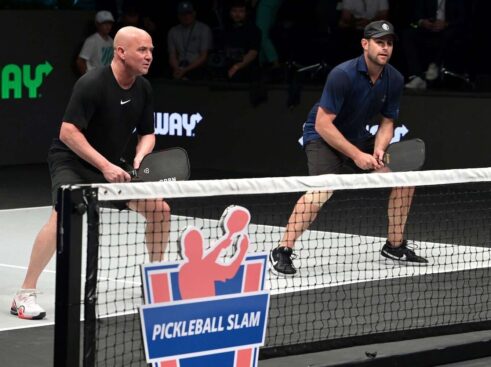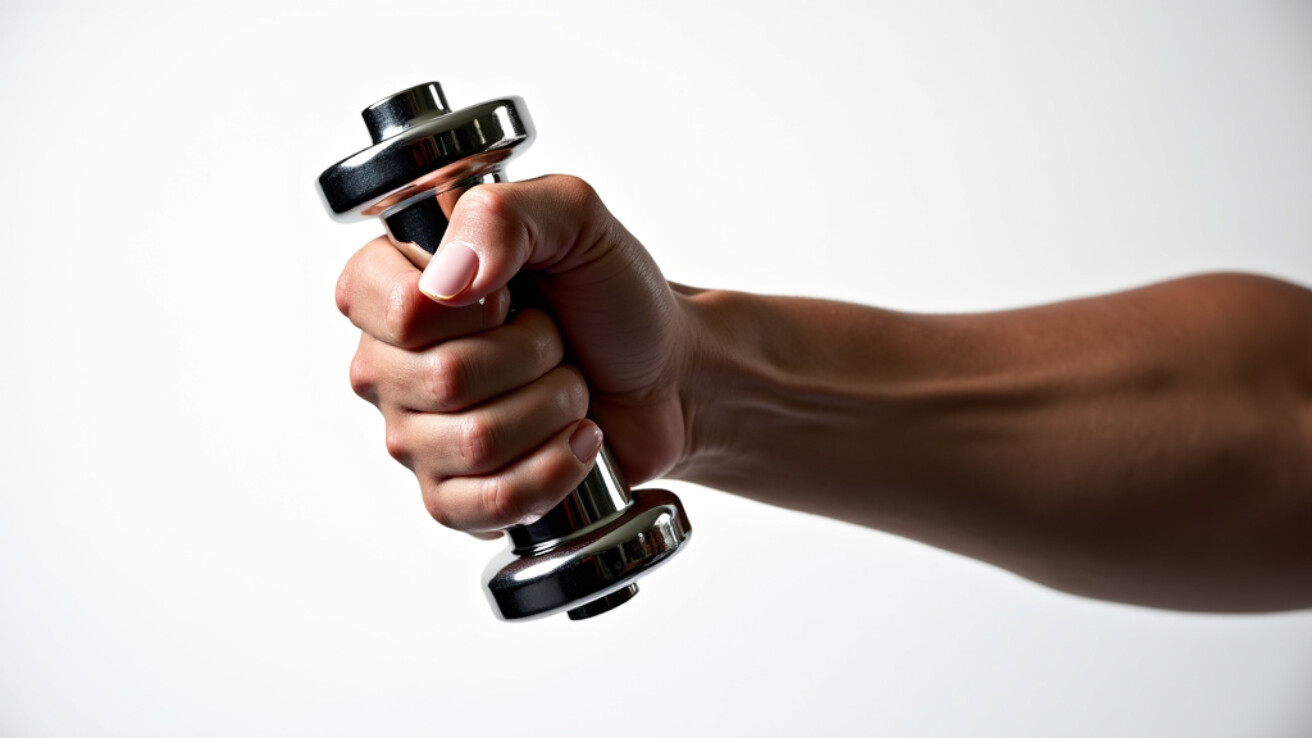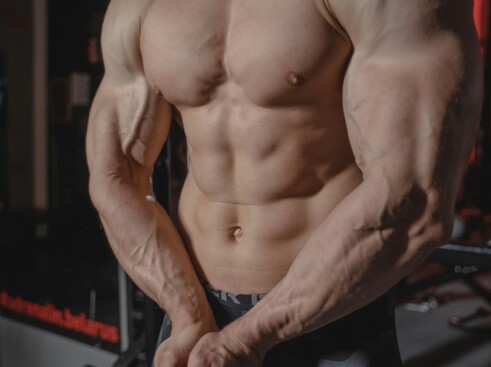Have you ever noticed your grip failing before your muscles during a heavy deadlift? Or struggled to open a stubborn jar lid? The strength of your hands affects nearly everything you do, yet it’s often overlooked in fitness routines.
Grip strengtheners are effective tools for anyone looking to enhance their hand power and dexterity. These specialized devices target the over 30 muscles in your hands while strengthening the critical tendons and ligaments that support daily function.
From professional weightlifters maintaining their grasp on heavy barbells to office workers managing typing-related hand fatigue, grip strengtheners provide focused training that traditional exercises miss.
Recent research shows that grip strength serves as a key indicator of overall health and longevity. Whether you’re an athlete seeking better performance or someone who wants to maintain independence with daily tasks as you age, understanding how to properly train your grip strength has become essential.
Let’s examine how these specialized tools can improve your hands’ capabilities and enhance both your fitness journey and quality of life.
Types of Grip Strengtheners
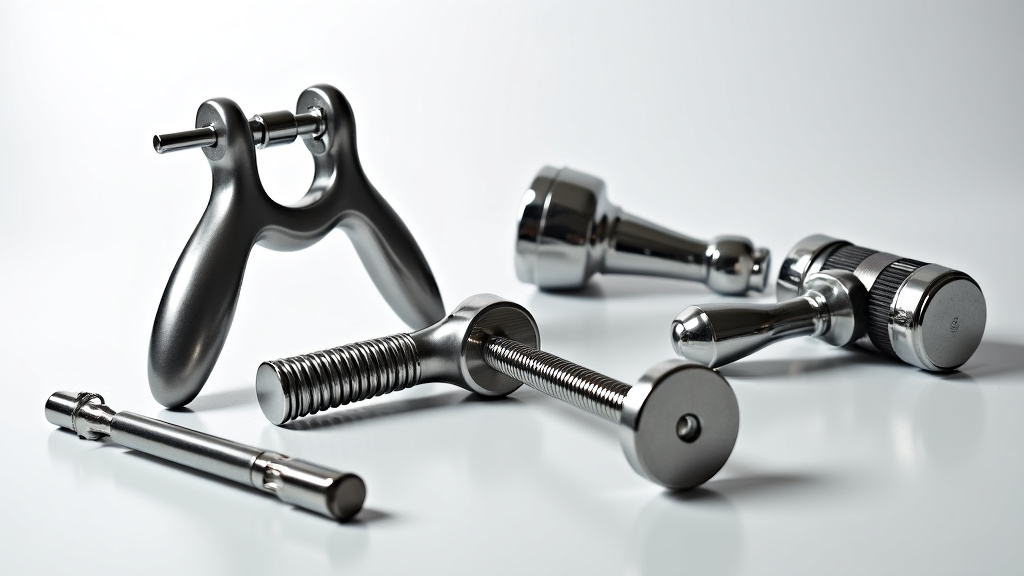
I’ve spent countless hours testing different grip strengthening tools, and I’m excited to share the key types that can transform your hand strength. Spring-loaded grippers, like the iconic IronMind Captains of Crush, are my go-to recommendation for building raw crushing power.
These classic grippers provide consistent resistance through their aircraft-grade aluminum construction and alloy-steel springs, making them perfect for developing overall grip strength. Their proven track record since 1995 demonstrates their effectiveness.
Spring-Loaded Grippers
Spring-loaded grippers remain the most widely used type, featuring two handles connected by a heavy-duty spring mechanism. They excel at building crushing grip strength, essential for activities like deadlifting and rock climbing.
The beauty of quality spring-loaded grippers lies in their durability – premium models like IronMind’s maintain tension over time. This consistency ensures reliable progress as you advance through different resistance levels.
What I particularly appreciate about spring-loaded grippers is their portability. You can easily carry one in your gym bag or keep it at your desk for quick training sessions throughout the day.
Finger Exercisers
Finger exercisers offer a targeted approach, allowing you to train each digit independently. These precision tools are especially valuable for musicians, climbers, and anyone seeking enhanced finger dexterity.
Most finger exercisers use individual spring mechanisms for each finger, providing resistance that adjusts from 2 kg to over 5 kg per finger. This customization makes them ideal for both rehabilitation and performance training.
I’ve found that finger exercisers complement spring-loaded grippers effectively, developing the fine motor control that traditional grippers might miss. They’re particularly useful for improving pinch grip strength.
Adjustable Resistance Tools
Adjustable resistance tools represent the latest evolution in grip training. These versatile devices let you modify tension to match your strength level and training goals.
Many models offer resistance ranges from 22 lbs to 132 lbs, making them suitable for beginners and intermediate users alike. The ability to fine-tune resistance helps prevent training plateaus.
The convenience of adjustable tools becomes evident when working through different exercises or sharing equipment with training partners of varying strength levels. Note that adjustment mechanisms may wear over time with heavy use.
Specialty Training Devices
Specialty devices like wrist rollers enhance grip and forearm training by incorporating rotational movements. These tools add an important dimension to traditional grip work.
I’ve seen remarkable results using devices like the IronMind Twist Yo’ Wrist, which targets both concentric and eccentric twist strength. The resistance comes from weight plates, offering extensive progression potential.
Thick bar adapters provide another effective training stimulus by increasing the diameter of standard bars and handles. This simple modification significantly increases the challenge to your grip strength.
| Type | Best For | Resistance Range | Material | Adjustability |
|---|---|---|---|---|
| Spring-Loaded Grippers | Crushing Grip Strength | 60-365 lbs | Aircraft-grade aluminum | No |
| Finger Exercisers | Individual Finger Strength | 2-5 kg per finger | Plastic, steel | No |
| Adjustable Resistance Tools | Progressive Training | 22-132 lbs | Alloy steel | Yes |
| Specialty Training Devices | Forearm and Wrist Strength | Variable | Rubber, plastic | Yes |
Benefits of Using Grip Strengtheners
Grip strengtheners have emerged as powerful tools for enhancing both athletic performance and overall health. These simple yet effective devices improve your ability to maintain a strong, reliable grip during weightlifting, rock climbing, and tennis.
For athletes and fitness enthusiasts, enhanced grip strength directly translates to improved lifting performance. A stronger grip enables better control during deadlifts, pull-ups, and other pulling movements, leading to more effective workouts.
Beyond the gym, grip strengtheners play a crucial role in injury prevention. Regular training with these devices strengthens your hands and the supporting muscles in your forearms and wrists, creating a more resilient musculoskeletal system.
Everyday Benefits and Longevity
The advantages of grip training extend well beyond athletic performance. Simple daily tasks like opening jars, carrying groceries, and maintaining proper form during household chores become easier with improved grip strength.
According to UCLA Health research, grip strength serves as a vital indicator of overall health, particularly in older adults, where it can predict physical and mental function.
Scientists have discovered compelling connections between grip strength and longevity. Strong grip strength correlates with lower mortality rates and improved cardiovascular health, while reducing the risk of various chronic conditions.
For older adults, maintaining good grip strength helps preserve independence and enhance quality of life. Research demonstrates its connection to better mobility, increased activity levels, and reduced risk of falls.
Not only did I see my biomarkers improve, I know I’m taking exactly what my body needs for better performance and better day-to-day life.
Client testimonial from research studies
Whether you’re an athlete looking to enhance performance or simply want to maintain functional strength as you age, incorporating grip strengtheners into your routine can provide lasting benefits for your overall health and well-being.
Choosing the Right Grip Strengthener
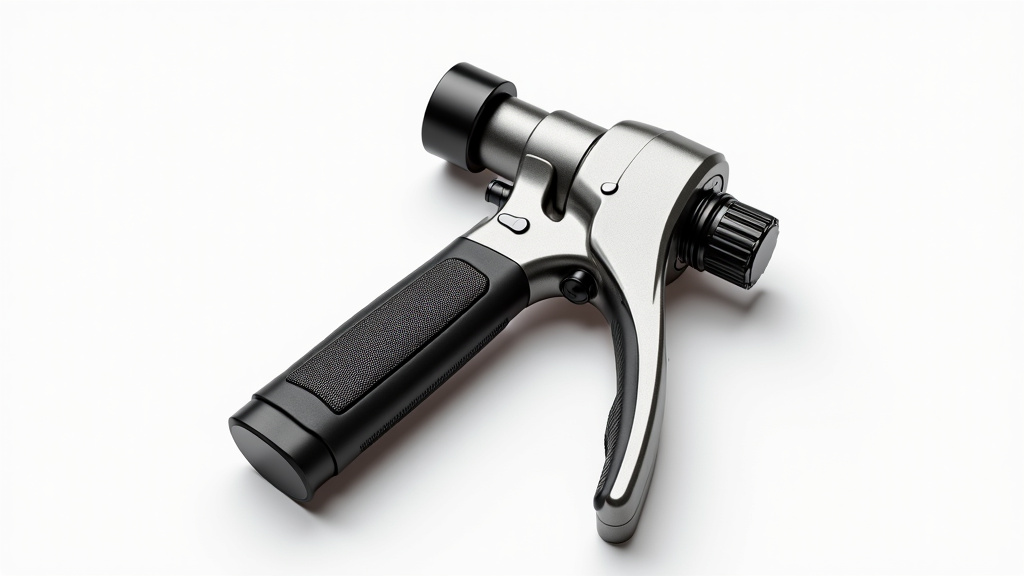
After testing dozens of grip strengtheners and consulting with strength experts, I’ve found that selecting the right tool involves more than raw squeezing power. Whether you’re working toward a heavier deadlift or simply want to open stubborn jars with ease, your choice should match both your current abilities and future goals.
For beginners, I recommend starting with an adjustable grip strengthener like the WOD Nation Hand Grip Strengthener, which offers resistance levels from 100 to 300 pounds. This allows for progressive strength building without purchasing multiple units.
Matching Your Experience Level
If you’re new to grip training, begin with devices offering resistance between 60-100 pounds. While this may sound intimidating, the mechanical advantage of these tools makes this range manageable for most adults.
Intermediate users should look for adjustable options in the 100-200 pound range. This range enables both endurance work at lower settings and strength building at higher resistances.
Advanced athletes may want to consider specialized tools like the IronMind Captains of Crush, which offers resistance up to 365 pounds for serious grip challenges.
Design Features That Matter
Beyond resistance levels, ergonomics play a crucial role in training success. Look for handles with knurling or textured surfaces that provide secure contact without causing discomfort during extended use.
Materials like aircraft-grade aluminum and alloy steel, found in premium options like the ProsourceFit strengtheners, offer superior durability compared to plastic alternatives. These materials maintain consistent tension even after thousands of repetitions.
For specific grip needs, consider tools targeting individual grip types. Climbers and musicians might benefit from finger-specific trainers like the Prohands Gripmaster, while powerlifters may prefer a crushing-grip focused tool.
Progressive Training Approach
Regardless of your chosen device, implement a strategic progression in your training. Start with 2-3 sets of 10-15 reps, performed 2-3 times weekly. As your strength improves, increase either the resistance level or rep count, but not both simultaneously.
Monitor your progress by tracking both your maximum closes and endurance work. When you can complete 3 sets of 20 reps with perfect form, it’s time to increase the challenge.
A grip strengthener is a long-term investment in your strength and health. Take time to evaluate your needs, start at an appropriate level, and choose a tool that will grow with your capabilities.
| Model | Resistance Range | Material | Price | Features |
|---|---|---|---|---|
| IronMind Captains of Crush | 60-365 lbs | Aircraft-grade aluminum | $25.95 | Coil-style, durable, various levels |
| Prohands Gripmaster | 1.5-9 lbs per finger | ABS plastic | $17.95 | Articulated, individual finger springs |
| WOD Nation Hand Grip Strengthener | 100-300 lbs | Alloy steel | $17.95 | Adjustable, compact, carrying case |
| GD GRIP Pro-70 | 55-154 lbs | Plastic | $24.90 | Durable, adjustable knob |
| Theraband Flex Bar | 6-25 lbs | Dry natural rubber | Starting at $16.58 | Wrist and forearm focus, portable |
Proper Technique and Training Tips
Whether you’re a competitive lifter or simply aiming to improve daily functionality, mastering proper grip strengthener technique forms the foundation of effective training. Grip strengtheners, like any strength training tool, require specific attention to form and progression to maximize results.
Begin with a thorough warm-up routine. Light wrist rotations, finger stretches, and a few minutes using a lighter resistance grip strengthener will prepare your muscles and joints for more intense work.
For optimal results, position the grip strengthener in your palm at a 45-degree angle, with the handles just above your thumb base. This positioning engages your entire hand effectively, particularly the often-neglected pinky finger, which plays a crucial role in overall grip strength.
Proper Form and Movement Patterns
When performing grip exercises, focus on controlled, deliberate movements rather than rushing through repetitions. Each squeeze should engage your entire hand in unison, from your fingers to your palm.
Keep your fingers positioned tightly together on the device to create maximum tension throughout your hand. This technique activates the muscles around your knuckles more effectively, leading to better strength gains.
Remember to maintain proper form throughout the entire range of motion. As noted in PowerliftingTechnique.com, ensure the handles touch completely during each repetition for maximum benefit.
Progressive Training Strategies
Start with a resistance level that allows you to perform 10-15 controlled repetitions while maintaining proper form. This range provides the right balance between building strength and developing endurance.
Incorporate various grip types into your training routine to develop well-rounded hand strength. Include crushing grip exercises with traditional grip strengtheners, pinching exercises using weight plates, and support grip training through dead hangs or farmer’s walks.
As your strength improves, gradually increase the resistance level of your grip strengthener. Avoid rushing to heavier resistances, as this can compromise form and lead to potential injury.
Safety and Recovery Considerations
Listen to your body and avoid overtraining. The small muscles in your hands and forearms need 48 hours of recovery between intense training sessions.
Monitor any signs of discomfort or pain, particularly in your wrists or finger joints. If you experience persistent pain, reduce the resistance or take a brief break from training to allow proper recovery.
Balance your grip training by incorporating finger and wrist extension exercises. This prevents muscle imbalances and promotes overall hand health and functionality.
Incorporating Grip Training into Your Routine
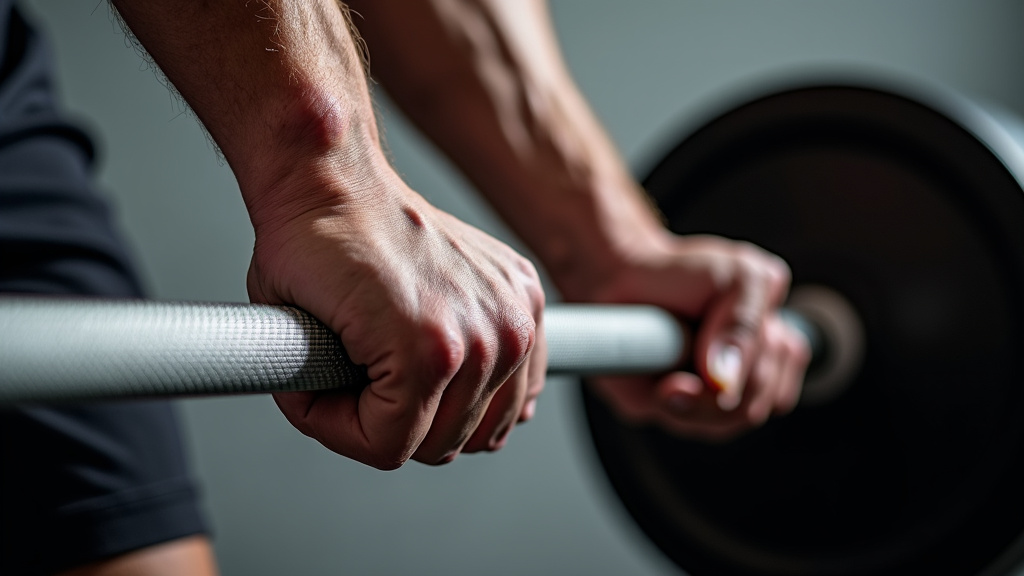
Developing grip strength requires strategic integration into your existing training program. Current research shows that adding dedicated grip work at the end of your workouts prevents interference with primary exercises while delivering meaningful stimulus for adaptation.
Start with 2-3 weekly grip training sessions, spacing them 48-72 hours apart to allow adequate recovery. For example, you might perform grip work after your Monday and Thursday training sessions. The key is maintaining consistency without compromising your main lifts.
For exercise selection, compound movements like deadlifts and farmer’s walks provide an excellent foundation for grip development. During your warm-up sets for deadlifts, use a double-overhand grip to accumulate quality grip volume before switching to mixed grip or straps for your working sets.
To enhance grip stimulus, consider adding fat grip attachments to exercises you already perform that don’t typically challenge your grip significantly. For instance, adding fat grips to strict dumbbell rows allows you to train both back and grip strength simultaneously without requiring extra time investment.
For direct grip work, finger flexion wrist curls are particularly effective. They train the flexor digitorum muscles at longer lengths compared to standard wrist curls, potentially leading to greater hypertrophy based on current evidence. Perform 2-3 sets of 12-20 reps at the end of your sessions.
For optimal progress, gradually build up your grip training volume over several weeks rather than adding everything at once. Start with 1-2 exercises per session and progressively increase based on how your hands and forearms recover. This measured approach helps prevent overuse issues while still driving consistent improvement.
Strengthening Your Grip, Enhancing Your Life
A strong grip transcends the confines of the gym, serving as a fundamental component of overall health and daily functionality.
Whether opening stubborn jars, carrying groceries, or pursuing athletic excellence, enhanced grip strength empowers you to tackle physical challenges with greater confidence and capability. Research consistently shows that individuals with stronger grips experience better cardiovascular health and lower risks of chronic conditions.
The journey to stronger hands doesn’t require complex equipment or extensive time commitments. Simple, consistent training with targeted exercises yields remarkable improvements in both strength and functionality. The key lies in making grip training a regular part of your wellness routine.
By prioritizing grip strength today, you invest in a more capable and confident tomorrow. From improved athletic performance to enhanced daily functionality, the benefits of a stronger grip extend through every aspect of physical activity and independence.


